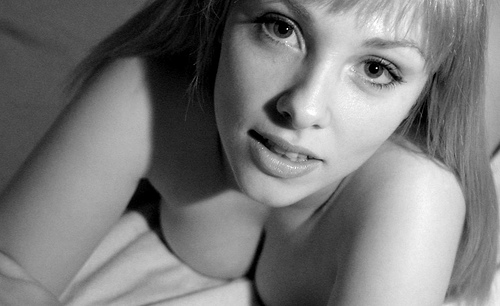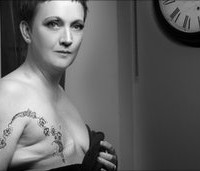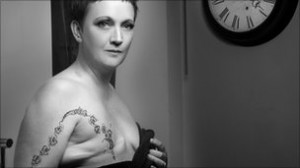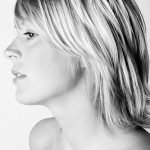
It doesn’t take much of a brain to fathom what a ‘nude’ photo is. If bits that are normally covered up on the beach are on display, then it’s a nude.
Similarly, a ‘non-nude’ photo is pretty straightforward: There are no hoo-hoos, wee-wees or breasticles on display.
So, what is all this ‘implied nudity’ stuff all about? Well, it turns out that there’s an ‘in-between’ stage of nude photography: Implied nudity. Used creatively, it can add an interesting dimension to your portraiture. Here’s how and
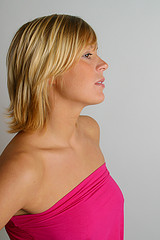 Right: Not a terrible portrait, but it isn't exactly super exciting ever. But there seems to be a lot of skin on display. Hmm, I wonder if I can make this photo more interesting... (click the picture to see it bigger, on Flickr...)
Right: Not a terrible portrait, but it isn't exactly super exciting ever. But there seems to be a lot of skin on display. Hmm, I wonder if I can make this photo more interesting... (click the picture to see it bigger, on Flickr...)
Put very simply, implied nudity happens in one of two ways: The model is dressed, but the photo is shot in a way where it looks as if she might not be. Or the model might be in some state of undress, but the photo is shot in such a way (through lighting, perhaps, or by the model’s position), where you can’t be sure whether or not they are naked.
So, er, what’s the point?
H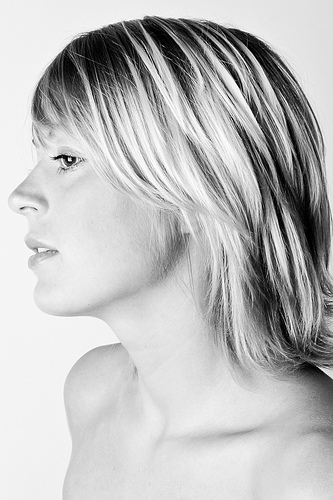 umans are funny creatures: our minds constantly play tricks on us. When pieces of information are missing, our minds tend to ‘fill in’ the information. When you read smthng lk ths sntnce, your mind doesn’t really struggle to fill in the missing letters, for example – the same happens in photography. In a photo where a model is covering up her breasts, your mind will automatically ‘fill in’ the missing bits.
umans are funny creatures: our minds constantly play tricks on us. When pieces of information are missing, our minds tend to ‘fill in’ the information. When you read smthng lk ths sntnce, your mind doesn’t really struggle to fill in the missing letters, for example – the same happens in photography. In a photo where a model is covering up her breasts, your mind will automatically ‘fill in’ the missing bits.
With this in mind, you can use that to your advantage as a photographer: By hiding your model’s dangly, bouncy, or naughty bits, you can sometimes create a photo which is even more allusive and erotic that one where it’s all on display.
Right: Now that's more like it. All it took was to de-saturate the image, fiddle with the contrast a little, and do a tighter crop, which in effect hides all her clothes.
There are a few different situations where this works extremely well. In the past, I have been known to do ‘nude’ sessions with models (especially models who aren’t that experienced), and then taken photos only of their face or head-and-shoulders. Some people relax (or tense up) in a completely unique way when they are not wearing clothes – which gets reflected in their face.
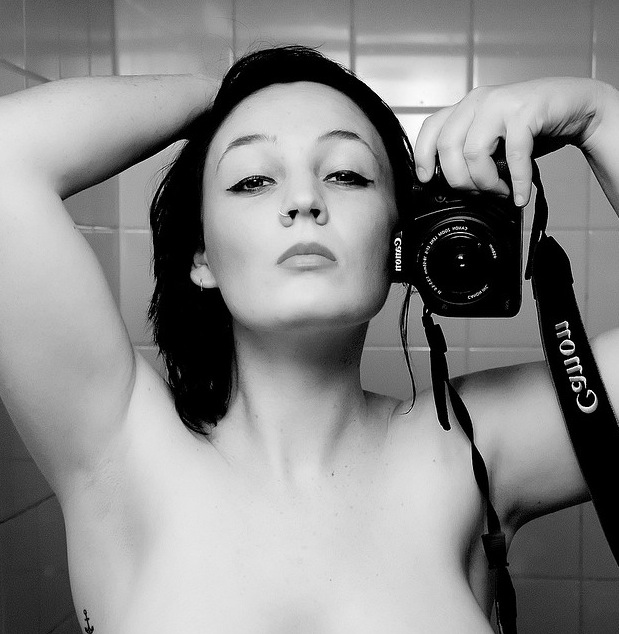
Another great example of implied nudity by Emily - see the full version on Flickr.
I think I’ve taken some of my best portraits this way – simply because the model was concentrating on making their bodies look good, so they forgot to worry about their face. The result? Beautiful, intimate portraits where you would never have known the model wasn’t wearing clothes.
The opposite is also true, of course: You might well find yourself working with a model who would love to do nudes, but is too shy to actually strip off. Using these techniques, you can create the illusion of nudity.
Showing more by hiding more
 Right: You can use implied nudity to create tension in a photograph... She's in a graveyard. Surely, she's not naked. Is she? (clicky for bigger)
Right: You can use implied nudity to create tension in a photograph... She's in a graveyard. Surely, she's not naked. Is she? (clicky for bigger)
We all have different tastes and preferences for what we think is attractive. Combine this with the afore-discussed tendency for people to ‘fill in the blanks’, and you can see what might happen: In a photo where something is hidden, it gives the viewer the opportunity to read as much (or as little) into the scene as they want to.
The great thing is that the viewer tends to ‘fill in’ the blanks with whatever their own fantasies or beauty ideals are, which means that by tapping into the fantasy world of your viewers, you can actually make your model more attractive: After all, your viewers are going to be attracted to whatever their fantasies cook up!
You can't see much (is she wearing a bra? Is she not?) - but it's the implication of nudity which makes this photo. (clicky for bigger)
So – a rather long and picture-heavy post to make a rather simple point: If you haven’t experimented with implying nudity in portraiture before, why not give it a shot – you might like what you come up with!






